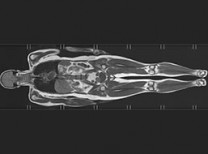Low back pain (LBP) is a common complaint among pregnant women. According to the American Pregnancy Association, nearly 50% of all pregnant women will suffer from LBP, either during pregnancy, or during the post-partum period.1 Many women experience LBP with their first pregnancy, and the majority of sufferers state that it hinders their daily activities. So taking preventative measures to minimize the pain is a good idea.
There are many theories as to what causes LBP during pregnancy including:
• Hormonal changes: Relaxin production increases during pregnancy, causing ligamentous laxity of the back and pelvis.
• Increasing abdominal size: Weight gain during pregnancy can shift the center of gravity anteriorly, which in turn increases the stress on the lower back.
• Compression and decreased height of the spine: Due to the increase in size and weight shift of the abdomen, the spine experiences different compressive loads than usual, and takes longer to recover after activities.
• Stretched abdominal muscles: In order to accommodate the increase in size, the muscles stretch causing them to weaken and fatigue faster during activity.
Chronic LBP prior to pregnancy (or during a previous pregnancy) and/or a history of pelvic trauma are also contributing factors to developing LBP during pregnancy.
Although the various causes and risk factors during pregnancy make LBP seem inevitable, there are numerous ways to prevent it. A 2011 systematic review investigating the diagnosis and treatment of low back pain during pregnancy showed that therapeutic exercise is effective in both the prevention and treatment during pregnancy.2 An earlier study in 2007 determined that a 12-week training program during pregnancy can prevent LBP at 36 weeks.3 Along with the proper exercise routine, learning the use of proper posture, body, and lifting mechanics can help ease the strain of daily activities and help prevent any increased and unnecessary load on the lower back and spine. It is also possible that increased strength and flexibility can lead to an easier labor and potentially, a faster recovery.
Who can help? Physical therapists are experts in the field of body mechanics and are able to teach pregnant women the proper way to lift, hold, sit, stand, and lie down to protect their back and abdomen through the demands of their daily routine. A physical therapist can also prescribe therapeutic exercise programs to increase strength and endurance of the muscles affected by pregnancy. An important part of physical therapy is incorporating the exercises and skills learned into the home environment, and to practice them on an ongoing basis.
Low back pain has a good prognosis, and most women recover within the first few months after childbirth. Physical therapy can be a proactive solution to LBP and may help to make pregnancy a more positive experience.
D’Arcy Hlavin is a Doctor of Physical Therapy with Avid Physical Therapy skilled in treating musculoskeletal issues such as low back pain. She has a special interest in women’s health and pregnancy related musculoskeletal issues and can be reached at darcy.hlavin@avidphysicaltherapy.com. (760) 347.6195.
References: 1) American Pregnancy Association. Pregnancy and Physical Therapy. http://americanpregnancy.org/pregnancyhealth/physicaltherapy.html 2) Katonis P, et al. Pregnancy-related low back pain. Hippokratia. 2011; 15(3):205-210; 3) Morkved S, Salvesen KA, Schei B, Lydersen S, Bo K. Does group training during pregnancy prevent lumbopelvic pain? A randomized clinical trial. Acta Obstet Gynecol Scand. 2007;86:276–282.
















































Comments (0)